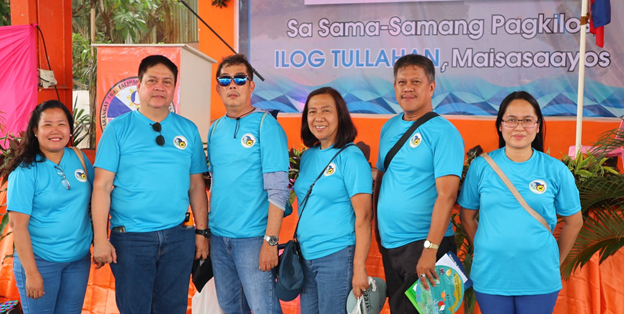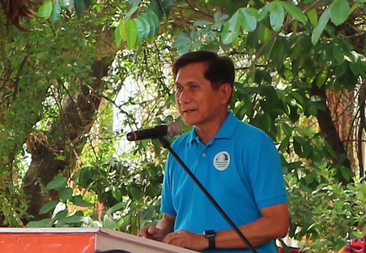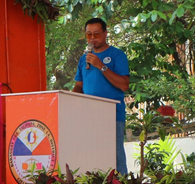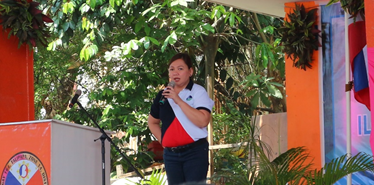The Mines and Geosciences Bureau (MGB) participates in the March 31, 2019, Tullahan-Tinajeros River System Clean-up Drive dubbed as “#Sa Sama-Samang Pagkilos, Ilog Tullahan Maisasaayos”, a collaborative undertaking between and among the national and local government, the private sector, the youth and volunteers towards one common objective: to achieve a cleaner, safer and healthier environment.

From L-R: The writer of this Article, Acting Director ATTY. WILFREDO G. MONCANO, ENGR. ROMUALDO AGUILOS, MS. FE CRUZ, Metallurgical Technology Division, MR. ARIEL VILLANUEVA, Administrative Division, and MS. FARA JOICE G. HORNEDO, Legal Service Division
MGB contingents, led by Acting Director Atty. Wilfredo G. Moncano, joined in witnessing the “Sabayang Pagkulay ng Kapaligiran” (Community Mural Painting) and the “Lagdaan ng Kasunduan” by and between the Department of Environment and Natural Resources (DENR) and Punong Barangays from the different participating Barangays, which aims to involve communities and empower them in protecting their own waterways, at the Covered Court, GSIS Hills Subdivision, Road 8, Barangay 164, Caloocan City. The other MGB contingents joined the clean-up drive in different areas together with volunteers from Barangays Holy Spirit, Batasan Hills, Commonwealth and Talipapa during the “Sabayang Paglilinis ng Ilog Tullahan-Tinajeros sa Sari-Sariling Lugar/Barangay”.

DENR Secretary Roy A. Cimatu, as he delivers his Message during the event

DENR Undersecretary Atty. Jonas Leones as he delivers a Report

DENR Undersecretary Atty. Annaliza Teh, as she delivers her Opening Remarks
The clean-up drive, tagged as “Battle for Rivers and Esteros”, is the first phase of the DENR’s Manila Bay rehabilitation, aimed at cleaning up and improvement of water quality. Accordingly, the Tullahan-Tinajeros River System has a coliform level of 92 million MPN/100mL. DENR Secretary Roy A. Cimatu, in his message during the said event, said that it is the government’s mission to clear the river of garbage, improve its water quality, and remove informal settler families along its waterways.
The Manila Bay Rehabilitation which will be done in three phases: a) cleanup and water quality improvement; b) relocation and rehabilitation; and c) education, protection and sustainment, will not only be beneficial to the metropolitan areas of Manila, but to the country as a whole.
By: Legal Service Division
